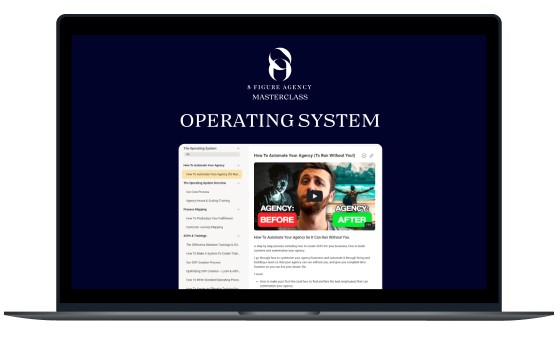Sitting at the heart of any successful business are the customers. They provide the lifeblood for your operation, and how they interact with your business will leave an impression that will form if they come back or not. That’s why it’s so important to measure customer experience – by understanding how your customers feel, think, or behave, you can make strategic decisions to help maximize customer satisfaction and long-term brand loyalty.
To pinpoint customer experience, you need to measure how customers interact with your business and measure the results. Let’s look at some of the most useful metrics for understanding customer experience.
What Is Customer Experience?
The customer experience (CX) is the sum of all interactions between a customer and a business. It includes anything from how customers discover a product to how they use it and what kind of feedback or reviews they leave afterward. From becoming aware of a business to even forming an opinion after purchase, every step in a customer’s journey contributes to their overall experience.
Don’t fall for the trap of just getting your product or service into the customers’ hands. Successful businesses place themselves in their customer’s shoes and follow along on their journey. This additional effort will ensure that you not only gain but retain customers. For, as we know, it costs five times more to acquire a new customer than to retain an existing one.
How To Measure Customer Experience
To measure your customer experience you need to focus on the customer journey. This includes everything from when the customer first learns about your business and what they experience along their journey to becoming a loyal customer.
By using customer experience metrics that measure customer satisfaction, engagement, and loyalty, you can gain valuable insights into how your customers perceive and interact with your business.
There are many ways to measure customer experience. You have probably heard of businesses using surveys and customer journey maps.
Surveys give your customers a voice where they can express their honest opinions of your product, your customer service, and how they feel about your business in general.
Customer journey maps, on the other hand, provide a visual representation of how customers move through their journey with your business – from initial contact to product purchase and beyond. They help you identify any pain points that may hinder the customer from taking the desired action.
For example, if your customers are unable to navigate or understand your website, you can measure their customer experience by tracking how many visitors make a purchase. With a customer journey map, you can measure how many visitors are leaving your website at each step of the way.
Customer Experience Metrics
Now that we’ve looked at how to measure customer experience, let’s look at a few of the most popular customer experience metrics.
1. Customer Satisfaction Score (CSAT)
The customer satisfaction score (CSAT) is one of the main metrics used to monitor and track your customer service efforts via support interactions. However, it can also be used to measure how satisfied customers are with your product or service.
It is a simple survey measure that asks customers to rate their satisfaction with the product, service, or support they received from your business on a sliding scale, usually from 1-10. For example, you can ask customers to rate their satisfaction with their overall experience on a scale of 1-10, with 1 being Very Dissatisfied and 10 being Very Satisfied.
To calculate the CSAT score, you must take the average of all the individual customer ratings.
2. Net Promoter Score (NPS)
The Net Promoter Score (NPS) measure is another popular customer experience metric. It measures the loyalty of customers to a particular brand or product and is based on the likelihood of the customer recommending the product or service to a friend.
The measure is usually taken via an online survey that asks customers to rate the likelihood of them recommending the product or service on a scale from 0-10, with 0 being Not Likely and 10 being Extremely Likely.
The NPS measure is then calculated by subtracting the percentage of customers who give a score of 6 or lower (Detractors) from the percentage of customers who give a score of 9 or 10 (Promoters).
3. Customer Effort Score (CES)
Purchasing from your store should be easy and effortless. The Customer Effort Score (CES) tracks how much effort customers experience when interacting with your business. It can measure how much effort customers need to make when ordering, setting up an account, or trying to reach customer support.
Similar to CSAT and NPS, the CES measure is taken via an online survey that asks customers to rate the effort needed when interacting with your business. Customers can rank their efforts as easy, neutral, or difficult.
To measure the CES score, you must take an average of all the separate customer ratings.
4. Customer Lifetime Value (CLV)
Customer lifetime value (CLV) refers to how much value customers bring to your business throughout their entire relationship with your company. Typically, this measure is calculated by multiplying the customer’s average purchase value by the number of times they have purchased over a given time.
For example, if you measure your customer lifetime value over a year, you would take the total revenue generated from all customers during that year and subtract any costs associated with acquiring and retaining them (such as advertising or discounts).
5. Customer Churn Rate
The customer churn rate quantifies how many customers cancel their subscription, membership, or service within a given time.
It is usually calculated as the percentage of customers who cancel their subscriptions or services in a month relative to the total number of paying customers in that same month. A high customer churn rate indicates that your business needs to provide customers with a satisfactory experience and that they are likely to switch to another provider.
6. Customer Retention Rate
Retention is always better than acquisition, and the customer retention rate tracks how many customers stick with your business over time. To measure this metric, you must take the number of repeat transactions or returning customers in a given time and divide it by the total number of customers within that same period.
A high customer retention rate indicates that your business is doing a good job of providing customers with a positive experience.
7. First Contact Resolution (FCR)
Businesses should aim to resolve customer issues quickly and efficiently. To measure how well your business is doing in this regard, you can measure the rate at which customers have their issues resolved on the first contact.
This measure, known as First Contact Resolution (FCR), is calculated by taking the number of customer inquiries that were resolved on the first contact and dividing it by the total number of customer inquiries received in a given period.
8. Average Resolution Time (ART)
The Average Resolution Time tracks how long it takes to resolve customers’ issues on average. It is calculated by taking the sum of all resolution times and dividing it by the total number of cases resolved in that same period.
A lower Average Resolution Time indicates that your business is doing a good job of responding quickly to customer issues.
9. Monthly Active Users (MAU)
Your monthly active users highlight how many customers are actively using your product or service within a month. It is calculated by taking the total number of customers who have interacted with your business in any way over one month and dividing it by the total number of paying customers in that same month.
A higher measure indicates that your business is providing customers with a positive experience that keeps them actively engaged.
10. Trial-To-Paid Conversion Rate
If you offer trials, then it is essential to measure how well customers are converting from trial users to paying customers. This measure, known as the trial-to-paid conversion rate, is calculated by taking the total number of trial users who upgrade to a paid subscription or service in a given period and dividing it by the total number of trial users in that same period.
A higher measure indicates that customers are satisfied with their trial experience and willing to move forward with your business.
Present a Consolidated View
Once you have collected all of these customer experience metrics, it is important to present a consolidated view of your customer’s experience. Look at overall trends and measure how each customer experience metric impacts the others. Doing so will help you identify areas that need improvement as well as growth opportunities.
We Help Businesses Making Sure That You Can Hit Your Goals
It is essential to measure the customer experience for your business to ensure that you are providing a satisfactory experience and making sure that customers stay with you in the long run.
By understanding customer experience metrics, businesses can measure how their customers interact with their business, identify areas of improvement, and ultimately hit their goals.
At 8 Figure Agency, we help businesses measure customer experience so they can make sure that they hit their goals. Our team of experts is here to help ensure that you measure customer experience the right way and get meaningful results.
Contact us today to learn more about how we can help you scale your business by prioritizing customer experience.






